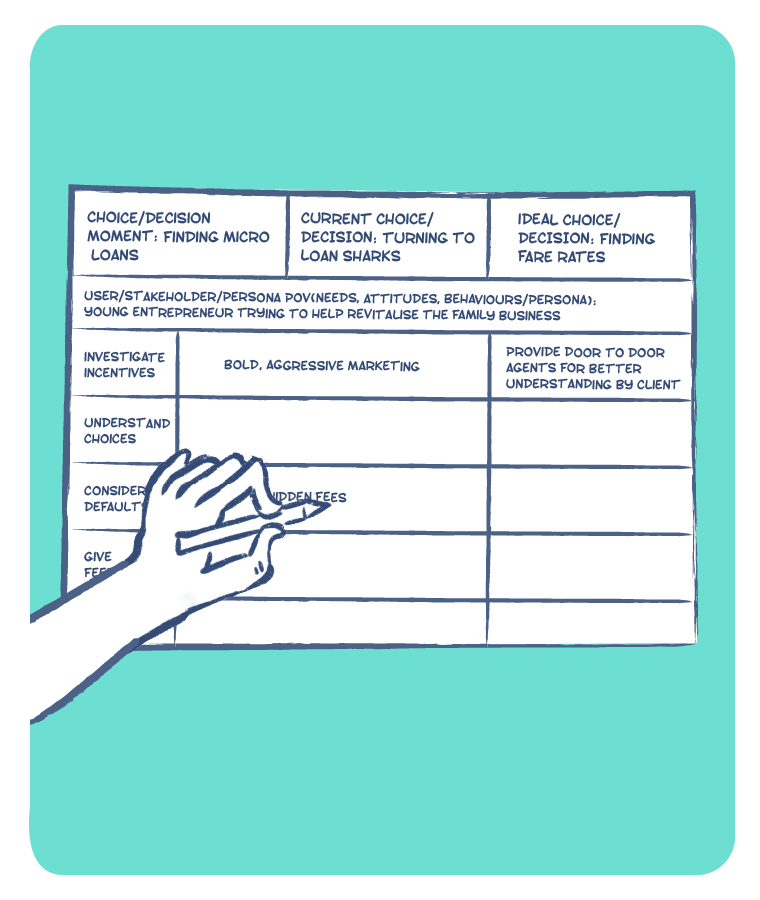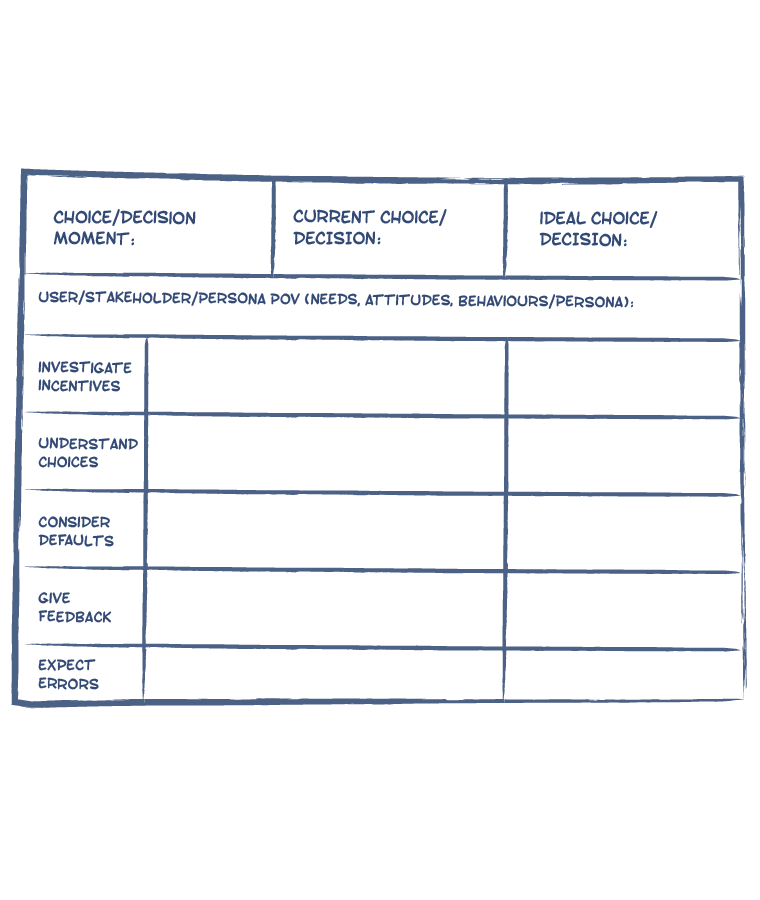BEHAVIOUR DESIGN | TOOLS
NUDGE
60-90 Min
The NUDGE framework is a set of principles that help designers influence decisions made by people. The framework states that while people should have the freedom to make their own choices, they should also be provided assistance that allows them to make better decisions. This approach to designing people’s choices is broadly called ‘Choice Architecture’. The framework was first proposed by Nobel prize winning economist, Richard Thaler.
USE CASES
- Help people make decisions when they have multiple choices and do not fully appreciate the true costs and benefits of their actions.
- Help people make decisions when they struggle with genuinely complex choices that require a high degree of reflection, fact finding, analysis, etc.
- Help them make decisions that are rare in nature and are not informed by their own experiences.
- Help make decisions when people need feedback on current decisions.
LIMITATIONS
The NUDGE Framework is best used to influence moments where people are making a clear choice/decision. It may not be suited to changing ingrained attitudes and behaviours that may not have clear ‘choice moments’.

